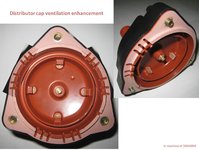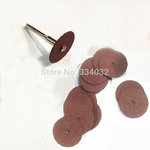Hi Everyone,
Over here, we suffering the usual damp, cold days, with temperatures struggling to get above freezing (mild, I guess, for many of you over there in the States), but my question relates to our E500E’s, and how we might avoid the dreaded moisture in the distributors?
My intention was to garage my 500E throughout most of this winter, not least to avoid salty roads. However, in an endeavour to minimise the risk of the aforementioned condensation in the distributors, I made a habit, every 2/3 weeks or so, of starting the engine and letting it idle up to “normal” temperature – and then re-garaging car.
However, today it appears the dreaded moisture struck! After initially starting and idling normally, as the engine warmed up it started misfiring/spluttering/backfiring, to a point were I had to shut it down. It now won't restart apart from much misfiring/backfiring.
I haven’t “pulled” the distributor caps as yet, but assuming the problem is the dreaded damp, how best to avoid this?
I have been told that in doing what I had been, i.e. allowing the engine to warm up, then re-garage the car, I could well be exacerbating the problem - and that it would be better either to (a) not start/warm up the engine at all, or (b) if I did, then I should take the car out for a good hour/50 mile run.
My garage has “minimal” background heating – just sufficient to stop everything getting damp, and in so far as the car is concerned, we have “extended” the ventilation slots cut in the distributor caps to make them a little larger (having the foreknowledge re damp).
The caps, rotors and insulators were renewed 15 months ago.
Any suggestions, anyone?
Over here, we suffering the usual damp, cold days, with temperatures struggling to get above freezing (mild, I guess, for many of you over there in the States), but my question relates to our E500E’s, and how we might avoid the dreaded moisture in the distributors?
My intention was to garage my 500E throughout most of this winter, not least to avoid salty roads. However, in an endeavour to minimise the risk of the aforementioned condensation in the distributors, I made a habit, every 2/3 weeks or so, of starting the engine and letting it idle up to “normal” temperature – and then re-garaging car.
However, today it appears the dreaded moisture struck! After initially starting and idling normally, as the engine warmed up it started misfiring/spluttering/backfiring, to a point were I had to shut it down. It now won't restart apart from much misfiring/backfiring.
I haven’t “pulled” the distributor caps as yet, but assuming the problem is the dreaded damp, how best to avoid this?
I have been told that in doing what I had been, i.e. allowing the engine to warm up, then re-garage the car, I could well be exacerbating the problem - and that it would be better either to (a) not start/warm up the engine at all, or (b) if I did, then I should take the car out for a good hour/50 mile run.
My garage has “minimal” background heating – just sufficient to stop everything getting damp, and in so far as the car is concerned, we have “extended” the ventilation slots cut in the distributor caps to make them a little larger (having the foreknowledge re damp).
The caps, rotors and insulators were renewed 15 months ago.
Any suggestions, anyone?



